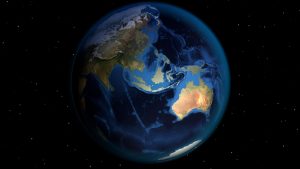Pandemic aside, one of Australia’s central anxieties this past year has been finding a way to diversify its economy. The country’s overreliance on the Chinese market has been a prominent concern for a while, but 2020 clearly demonstrated why it is a pressing problem. Part of the problem lies in being too reliant on one market — limiting options if that market’s needs and wants alter — but also the Chinese government is prone to acts of economic coercion and straight-up vengeance. With Beijing taking offense at Canberra’s entirely reasonable call for an inquiry into the origins of the COVID-19 pandemic, Australian barley, beef, seafood, coal, and wine have all been targeted with either import bans or excessive tariffs.
A market the size of China’s is almost impossible to replace. In the hope of alleviating its overreliance on China, India opening up its markets to Australian exporters remains a major goal in Canberra. However, both the inclinations of the Indian bureaucracy, and the holistic nationalism of the Bharatiya Janata Party (BJP) will continue to limit the access Australian businesses have to Indian markets. Despite some progress on identifying compatibilities, there remain certain cultural incompatibilities. Australian beef is not going to relocate itself from Chinese to Indian shelves, for example.
However, a recent joint report by the Asia Society Australia and the Australian APEC Study Center has identified another emerging Asian economy that could offer significant economic compatibility for Australia. While Vietnam may lack the population of India and China, its realignment over the past several decades away from a planning economy toward an internationally-engaged mixed economy has afforded it sustained economic growth, and considerably increased its population’s living standards.
This realignment has already provided some increased opportunities for Australian businesses. In 1990 two-way trade between the two countries was a measly $32.3 million, yet by 2019 this had expanded to around $11.8 billion. This pales in comparison to the $252 billion worth of two-way trade between Australia and China, and, of course, this will never realistically be matched. But the report illustrates the areas where there is potential for further growth for Australia’s trade with Vietnam, and the potential to alleviate some of the anxiety that has developed over the Australia-China relationship.
Unlike Australia’s three main Asian trading partners — China, Japan, and South Korea — Vietnam still has an expanding population, projected to grow from 98 million to 120 million by 2050. Alongside this, Australia’s 300,000-strong Vietnamese community is able to provide solid links and cultural knowledge to capitalize on emerging market opportunities. Although Australia and Vietnam do not have a bilateral free trade agreement, there are now a number of regional agreements that both countries are participants in: the Comprehensive Progressive Trans-Pacific Partnership (CPTPP); the recently signed — and Vietnam-led — Regional Comprehensive Economic Partnership (RCEP); and the ASEAN Australia-New Zealand Free Trade Agreement (AANZFTA).
Growth opportunities for Australian exports identified in the report are primarily an expansion on Australia’s current trade with Vietnam, and a continuation of the way Australia has sought to facilitate the emergence of Asian economies over the past several decades through raw materials and expanding palates. Australia exports coal, iron ore, cotton, processed and live animals, scrap iron, wheat, aluminum, copper, zinc, fruit and nuts to Vietnam, and each category has the potential to substantially increase in volume.
This is both good and bad news for Australia. These are things Australia does well and can always be relied on to provide with quality, consistency, and punctuality. One reason why Beijing hasn’t targeted Australian iron ore is because it is China’s most reliable source of the essential metal. Vietnamese importers can have the confidence to know what they are getting from Australian sources, and this trust is vital for an expansion of the trading relationship. But Australia’s reliance on exporting resources and agricultural products also places it in a precarious position. Other countries could easily improve their practices and quality and provide substantial competition to Australian products in these areas.
What Australia lacks are the unique, knowledge-intensive industries that have no peer competitor. Education is one knowledge-based industry that Australia has honed, but the vast majority of Vietnamese students would be priced out of both the cost of degrees and the cost of living in Australia. It may be several decades before studying in Australia becomes accessible to the Vietnamese middle class.
Facilitating the emergence of Asian economies has been a clever and successful strategy for Australia, and with similar strategic interests forming a closer bond with Vietnam should be considered a priority area for Canberra. However, for a wealthy, and well-educated country like Australia its future engagement with Asia cannot continue to be reliant on simply digging stuff up and shipping it north. At some point Australia is going to have to use its capabilities for something a little more sophisticated.

































